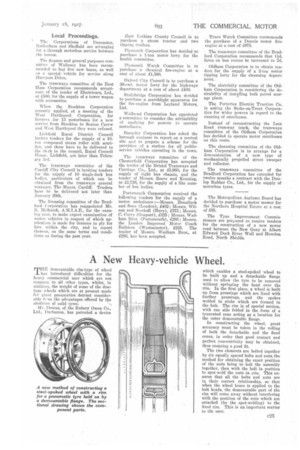A New Heavy-vehicle Wheel.
Page 47

If you've noticed an error in this article please click here to report it so we can fix it.
THE demountable rim-type of wheel has introduced difficulties for the heavy commercial user which are not common to all other types, whilst, in addition, the weight of some of the disctype wheels which are at present made for giant pneumatics detract considerably fr an the advantages offered by the abolition of solid tyres.
Mr. Downs, of the Rubery Owen Co., Ltd., Darlaston, has patented a device which enables a steel-spoked wheel to be built up and a detachable flange used to allow the tyre to be removed without springing the bead over the rim. In the first place, a wheel is built up from pressings which are lined with further pressings, and the spokes welded to stubs which are formed in the hub. The rim is of special section, with one side folded in the form of a truncated cone acting as a location for the outer demountable flange.
In constructing the wheel, great accuracy must be taken in the rolling of both the detachable and the fixed cones, in order that good contact and perfect concentricity may be obtained, thus ensuring a good fit.
The two elements are bolted together by Mx equally spaced bolts and nuts, the method for obtaining the exact position of the nuts being to bolt the assembly together, then with the bolt in position to spot-weld the nuts in situ. This ensures that all the bolts and nuts are in their correct relationship, so that when the wheel brace is applied to the bolt heads, the demountable part of the rim will come away without interfering with the position of the nuts which are attached (by the spot-welding) to the fixed rim. This is an important matter to the user.












































































































